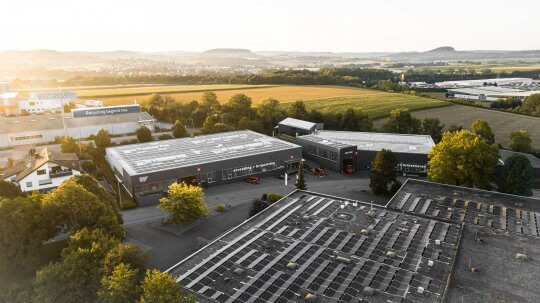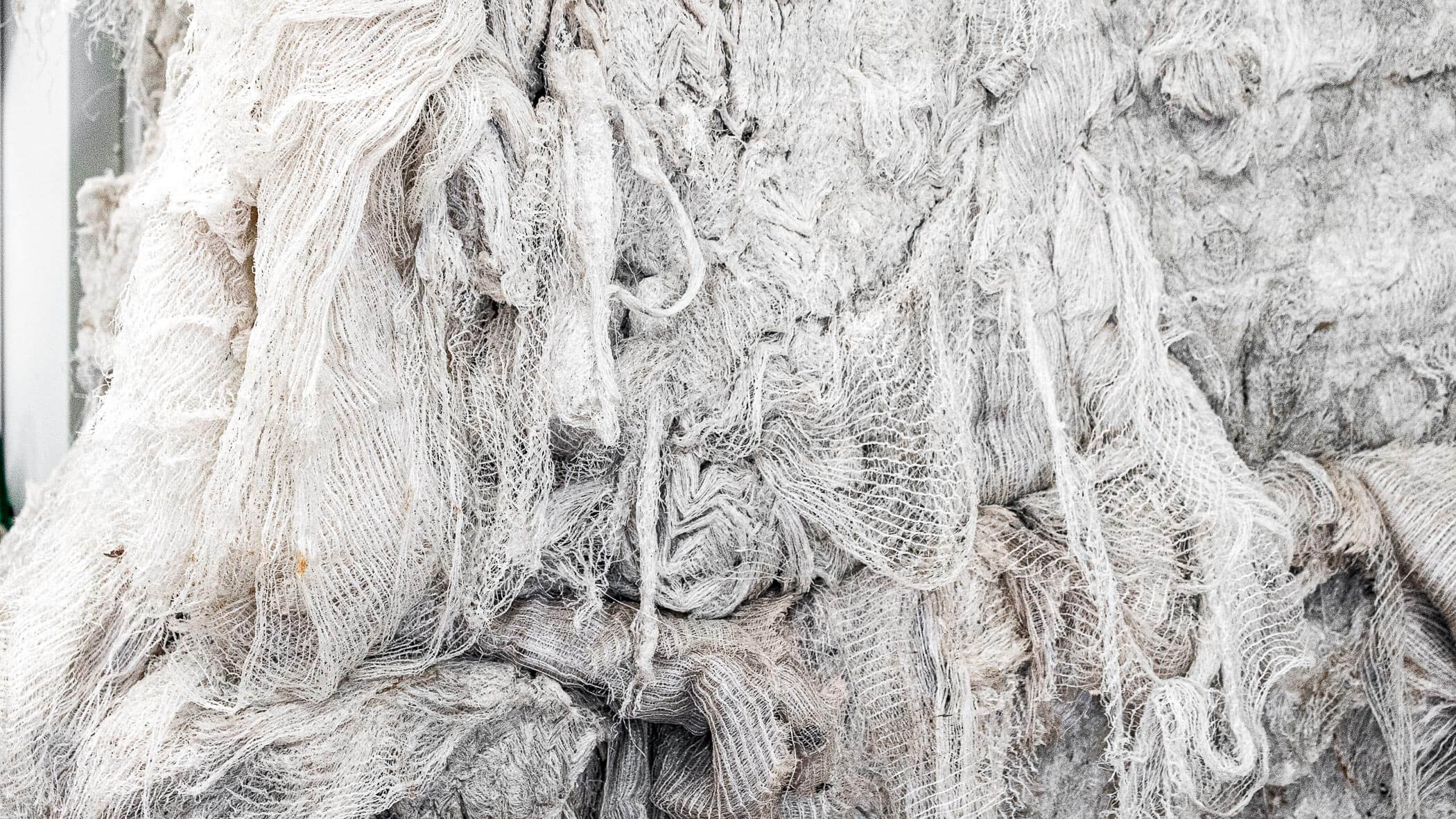
Fishing net shredder for recycling
Information about fishnet shredding and its preparation for recycling
While fishing nets are an important tool for fisheries, they also pose a major threat to the marine environment. Every year, many tons of fishing nets end up in the oceans, where they become a serious threat to marine life. But there is hope: recycling fishing nets offers a sustainable solution to address this problem and recover valuable resources.
More and more companies, initiatives and private individuals around the world are recognizing the urgency and declaring war on so-called ghost nets. This refers to abandoned, free-floating fishing nets and ropes that pollute our oceans. Unfortunately, most people know them all too well from memorable photos of turtles or other ocean creatures caught in them. With modern technology for recycling plastic fibers, something new can be created from this previously often linear waste. All in the spirit of the Circular Economy. Always at the front of the process chain: the shredder.
Fish net shredding and extrusion to regranulate in Korea
A WEIMA WLK 1500 single-shaft shredder shreds nylon fishing nets. The downstream extrusion line melts the shredded nets and produces high-quality granules from which new products can be made again.
What material are fishing nets made of? Nylon rules.
Fishing nets can be made of various materials - but first and foremost nylon (PA6 or PA66), polyethylene (PE), polypropylene (PP) and occasionally cotton. Nylon nets are known for their strength and durability, while polyethylene and polypropylene nets are resistant to wear and corrosion. Cotton nets are primarily still used in certain traditional or artisanal fishing methods. The choice of material depends on the particular requirements of the fishery and the environmental conditions on site.
What are the types of fishing nets?
- Trawls: These nets are towed by fishing vessels in the open sea or waters behind them. They are used to catch fish in large quantities.
- Set nets: These nets are placed and anchored in one location in the water. They consist of vertical stakes and horizontal nets that prevent fish from escaping. Set nets can be used in rivers, lakes or coastal waters.
- Drift nets: These nets are set by boats in the water and driven by the current or wind. Drift gillnets consist of floating bodies at the top and lead weights at the bottom to keep the net vertical in the water. They can capture large numbers of fish or other marine animals.
- Fish traps: Fish traps are cages or baskets made of netting material, usually used in shallow waters or coastal areas. They are used to attract and trap fish by making them swim into the basket and then not find the exit.
- Throwing nets: These nets are thrown by fishermen by hand. They are circular in shape and have lead weights around the edge to open and sink the net in the water. Cast nets are often used by fishermen from the shore.
- Gill nets: These nets are specifically designed to capture fish offspring (spawn, larvae). They are often used in fish farming to separate offspring from adult fish.
There are different types of fishing nets used depending on the fishing method and the specific requirements. The ones listed above are among the most common.
Did you know?
Greenpeace estimates that every year about 30 million tons of so-called bycatch are produced, which often die in agony in nets.
What are Ghost Nets?
The term ghost nets (first used by researchers in the 1990s) is used to describe lost, (intentionally) abandoned fishing nets floating in the sea. This global problem has received widespread media coverage. Ghost Nets pose a serious threat to the marine environment and are literally a ghostly invisible, yet dangerous and lasting threat to our oceans worldwide.

Floating pile of ghost nets
What makes Ghost Nets so dangerous?
Nets left in the sea are invisible death traps for many aquatic creatures. As they float in the water, fish, turtles and birds, for example, become entangled in them and subsequently remain trapped or drown in agony. These nets can float freely for years or even decades without decomposing – continuously causing damage.
Ghost nets not only pollute the oceans, but also lead to the loss of marine habitats and affect biodiversity. Their harmful impact extends beyond fishing grounds and can have far-reaching effects on the entire marine ecology. It is therefore crucial to take action to recover and recycle these lost fishing nets and minimize their impact on the marine environment.

Danger for marine wildlife: ghost nets
Request now the right shredder for plastic fishing nets
Request quote
How are old fishing nets recycled?
As is so often the case, the recycling process of fishing nets also begins with shredding. A shredder processes the nets to a homogeneous flake size / grain size and thus prepares them for the subsequent process steps. In addition, the volume is reduced, impurities are separated and transport is simplified.
This is followed by cleaning of the shredded nets in washing plants before they are melted and extruded. The end product is a high-quality regranulate or pellet.
The recycled fibers or pellets from the shredded fishing nets have many uses. They serve as raw materials for the production of various products such as textiles, carpets, nets, yarn, or packaging. Recycling fishing nets recovers valuable plastic resources and reduces the need for new materials, resulting in more sustainable and environmentally friendly production.
WLK Series: Highly productive plastics shredders
Machines of the WLK series are specially designed for plastic applications. With their extremely stable design and large rotor diameters, shredders of the S5 and S7 series offer almost unlimited application possibilities for the shredding of plastic waste.

WEIMA WLK 1500 interior view
W5 series: easy-to-maintain all-rounders with swing ram
With working widths of 1,400 mm, 1,800 mm or 2,200 mm, the W5 series takes on a wide variety of materials. The inspection flap and the upward-swiveling screen basket make the single-shaft shredder particularly easy to maintain. Thanks to the wide conveyor belt cutout, large quantities of shredded material can be transported away quickly and cleanly.

WEIMA W5 shredder interior view
PowerLine: universal shredder with single-shaft technology for pre- or post-shredding
Performance that pays off. The PowerLine series takes on any form of waste, including fishing nets. Ideal as a shredder in multi-stage plants. Can be equipped with hydraulic drive, direct drive or power belt drive.

WEIMA PowerLine shredder
Only available at WEIMA
Heavy duty machine designs
for long service life
Easy maintenance
for minimal down times
Various drive options
for maximum throughput
Fast service and support
for highest customer satisfaction
Everything from one source
machines, conveying technology, metal detection, support, spare and wear parts for customized solutions

WEIMA headquarters Ilsfeld (Germany)
Convince yourself
The WEIMA showroom is equipped with shredding and compacting machines of all sizes and technologies. This allows us to simulate your application as realistically as possible. You have the possibility to send us your material or to visit us directly in Ilsfeld. From our gallery you have the best view directly into the cutting room. This allows you to observe the shredding process live.
Request appointment now
Alternatively, you can send us material for testing. Click here for the form.
















